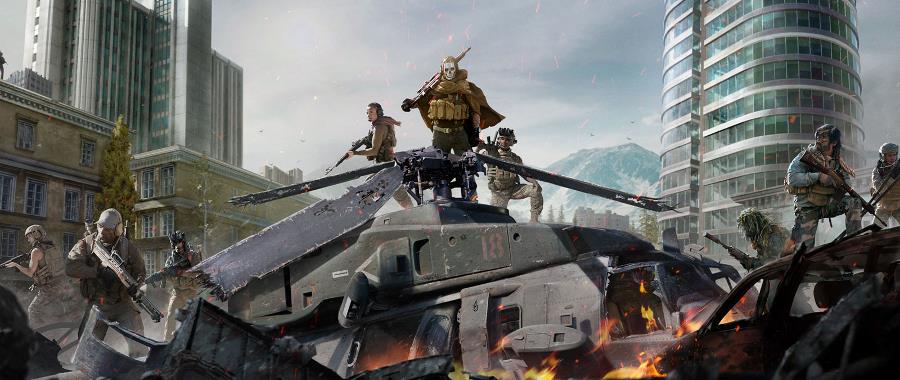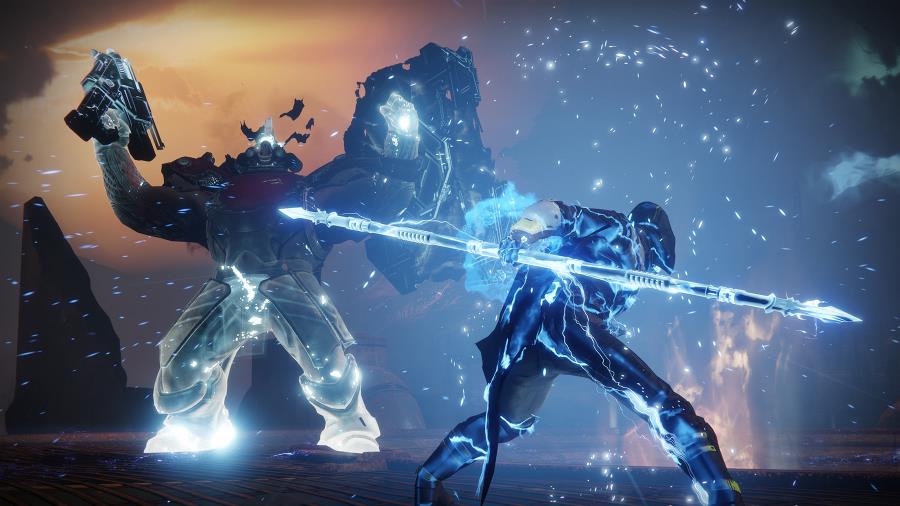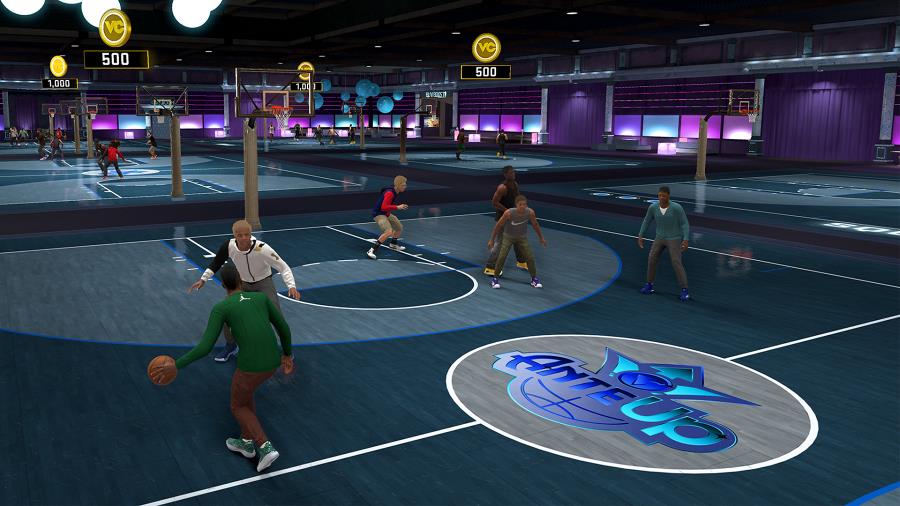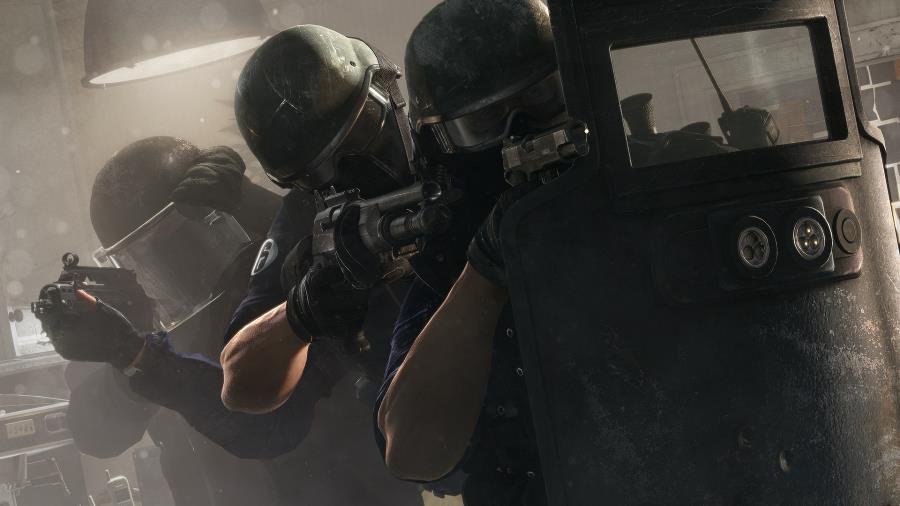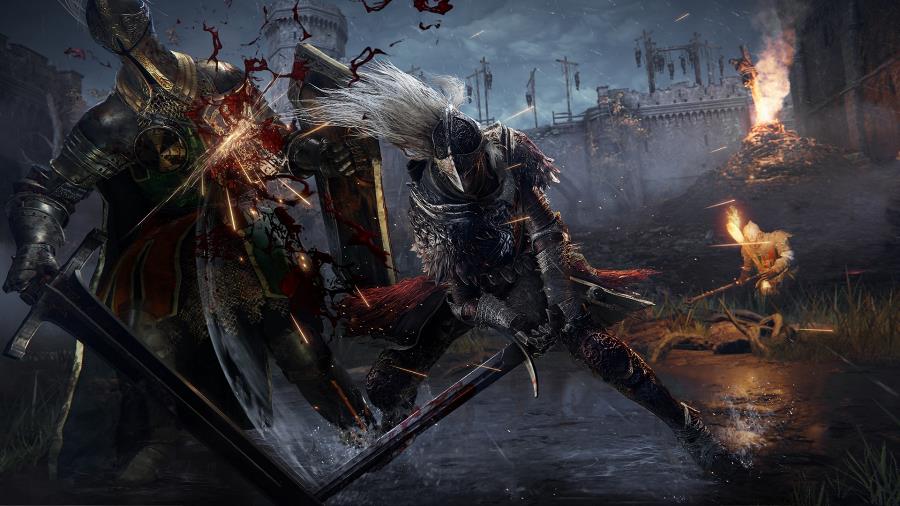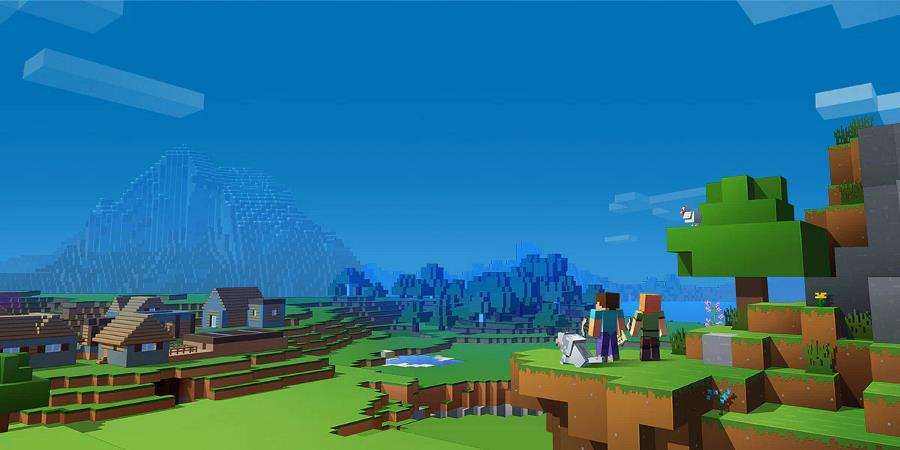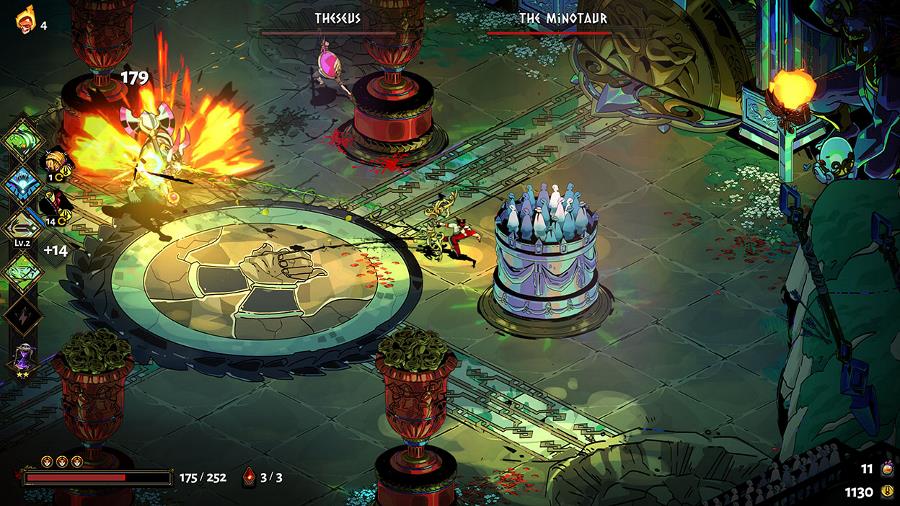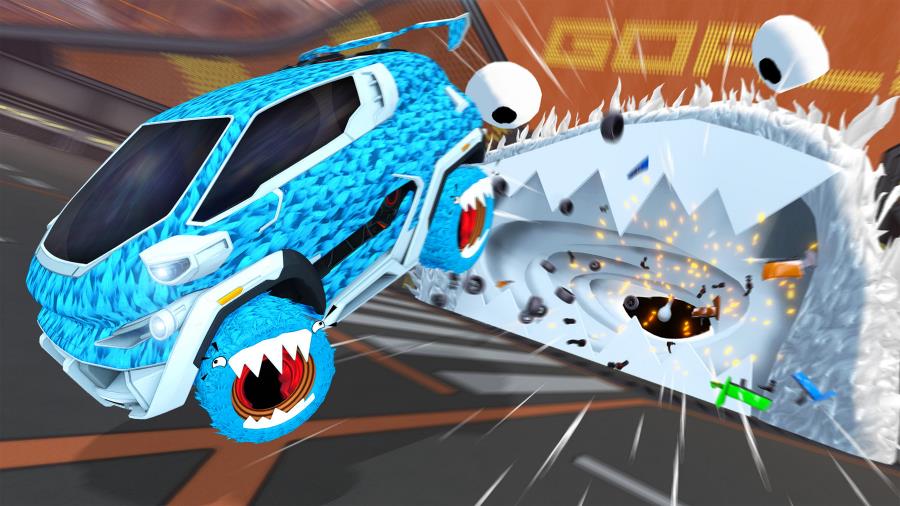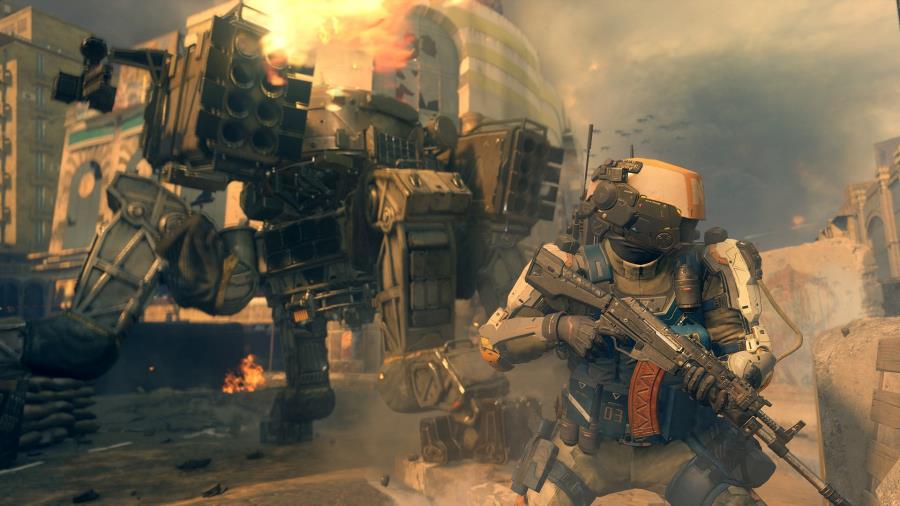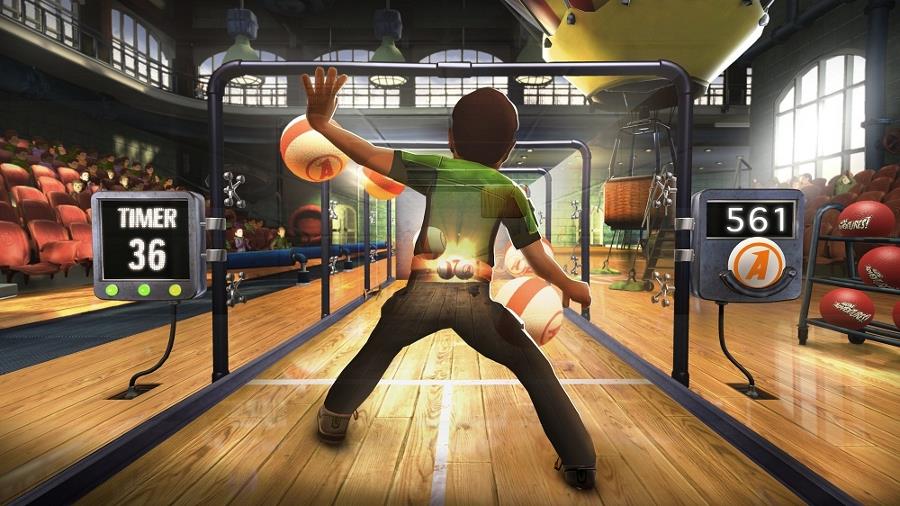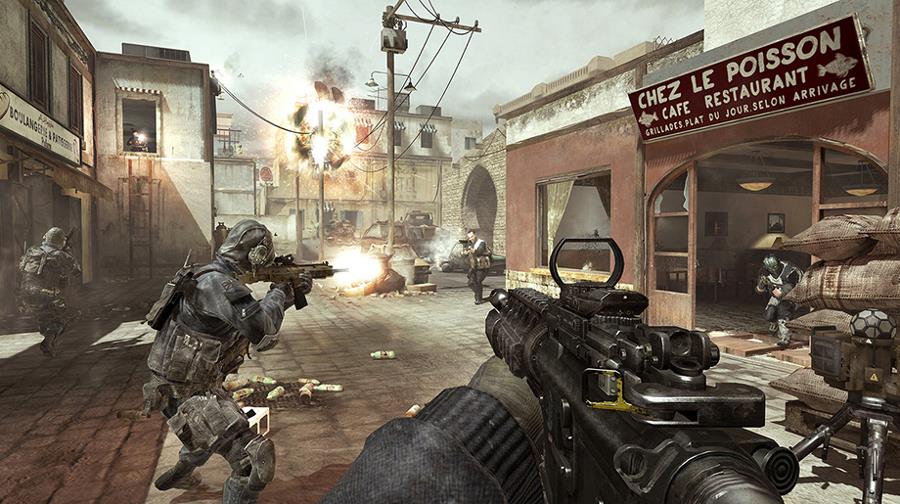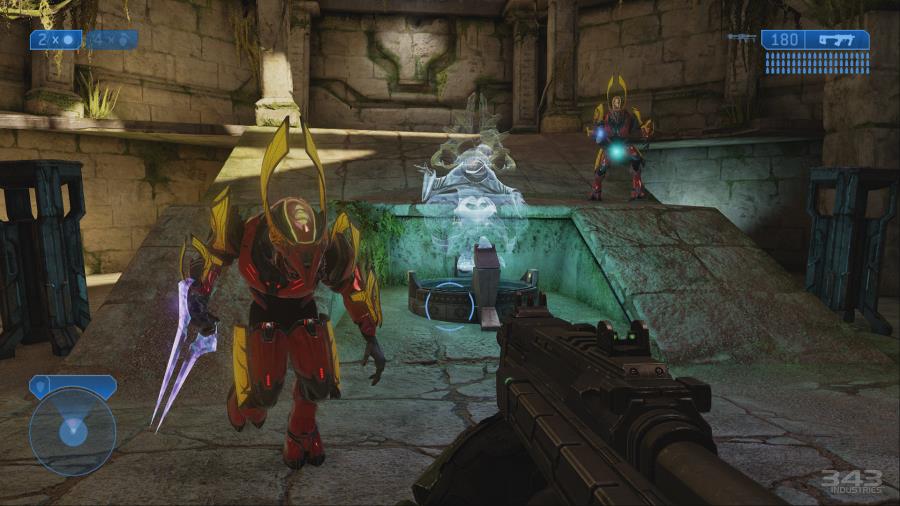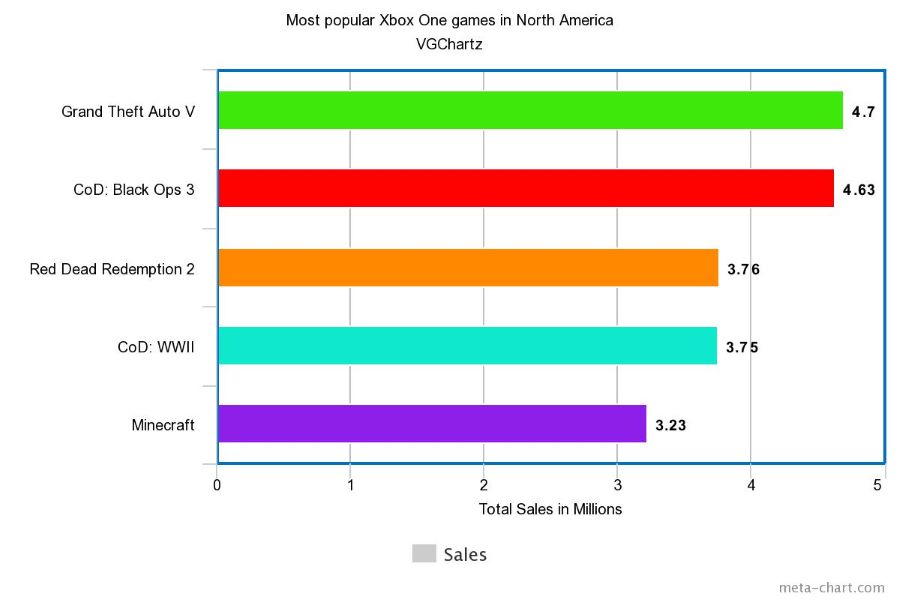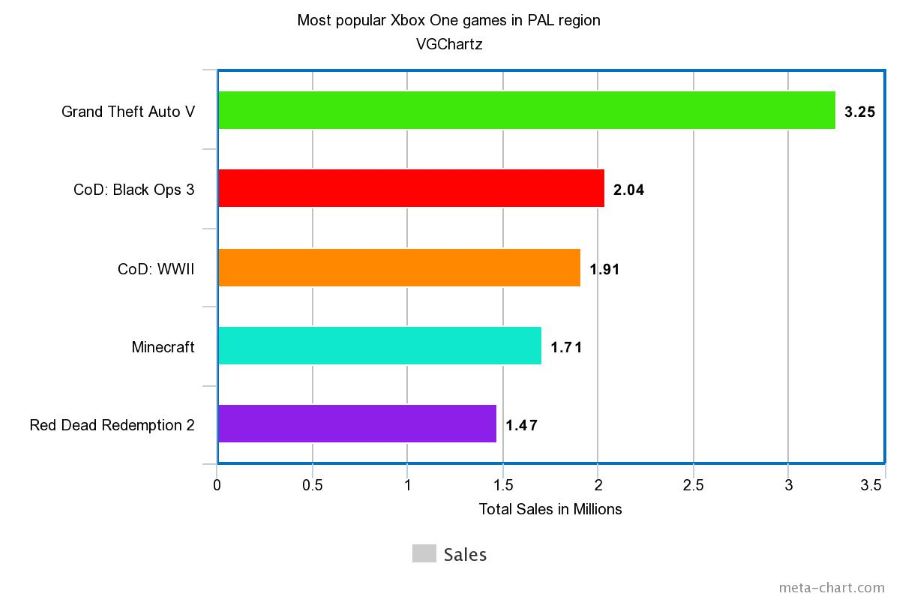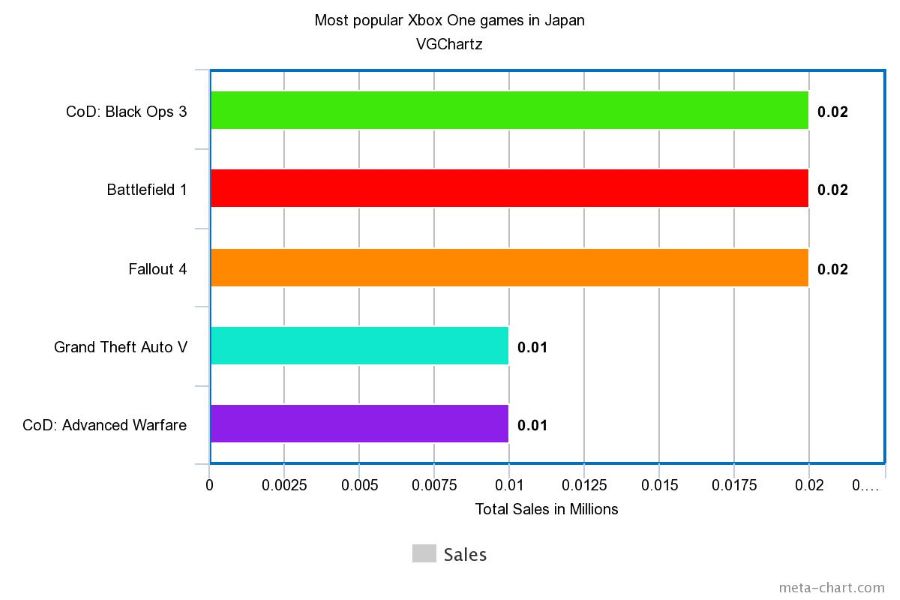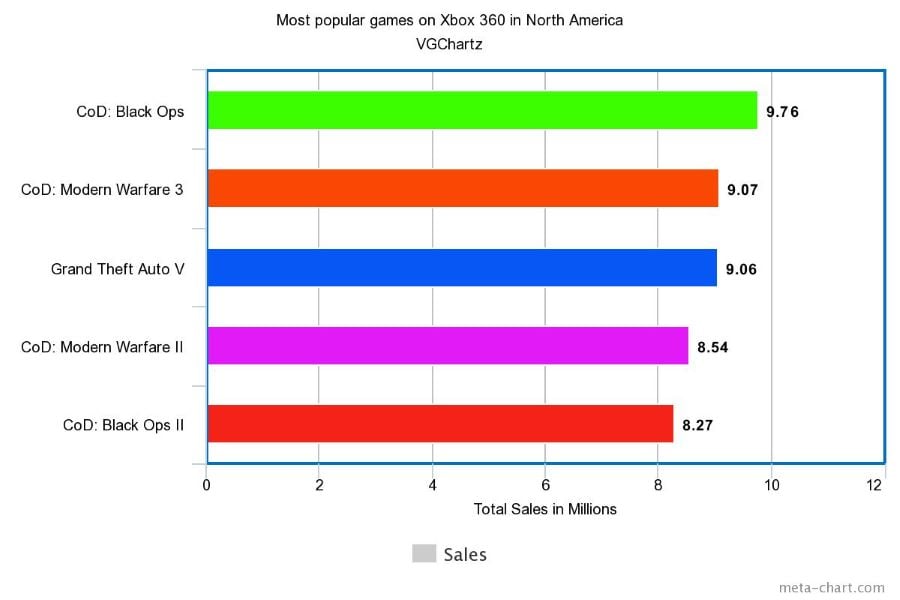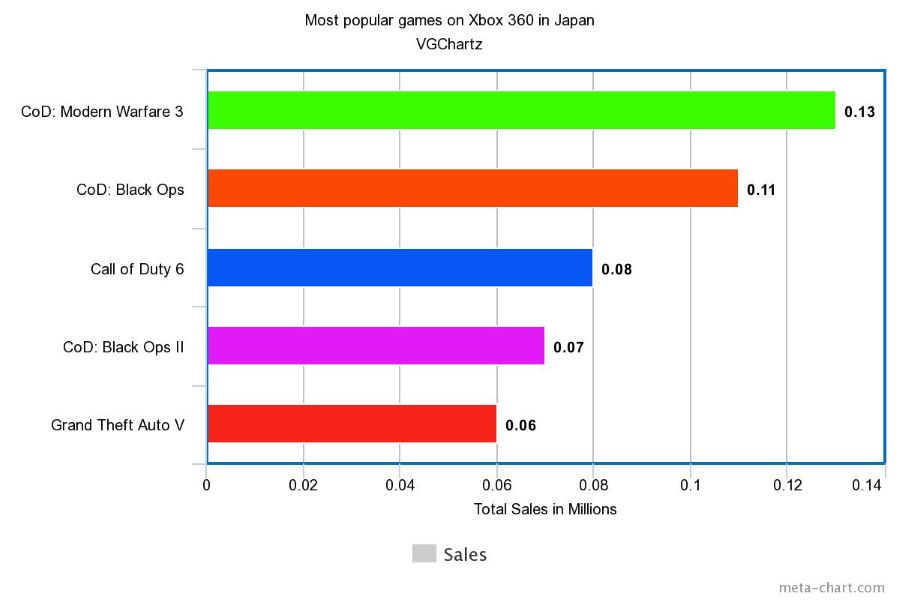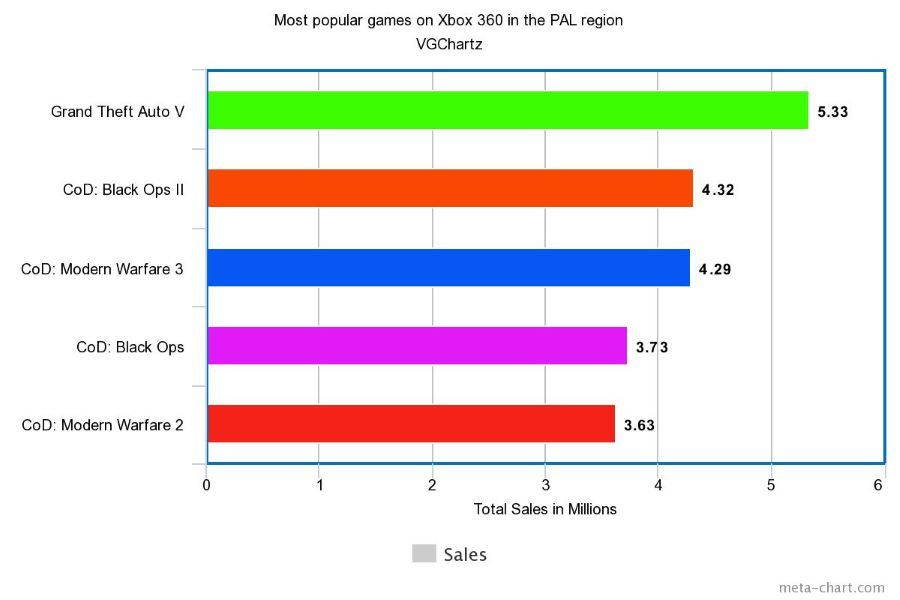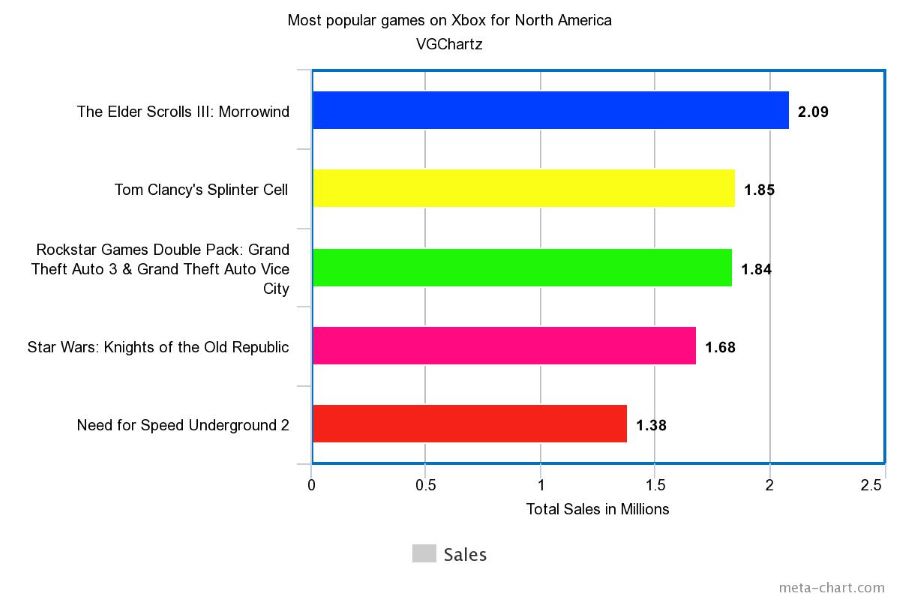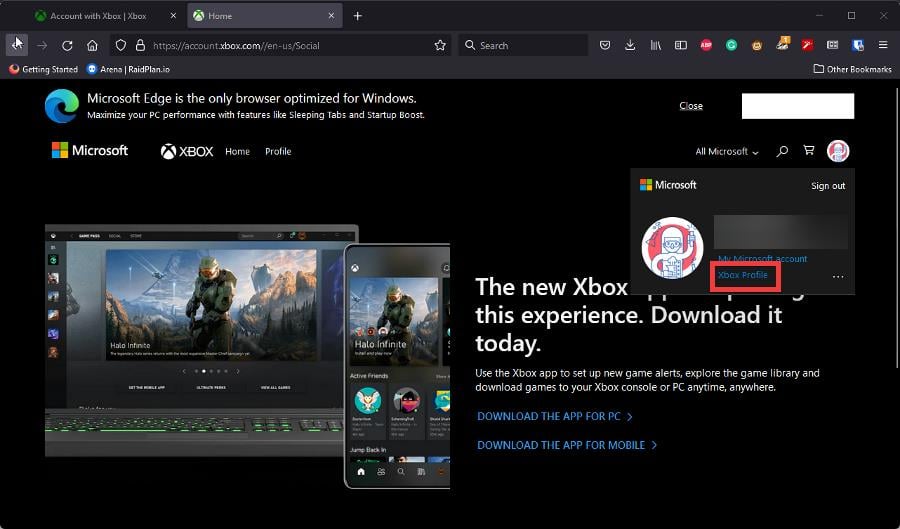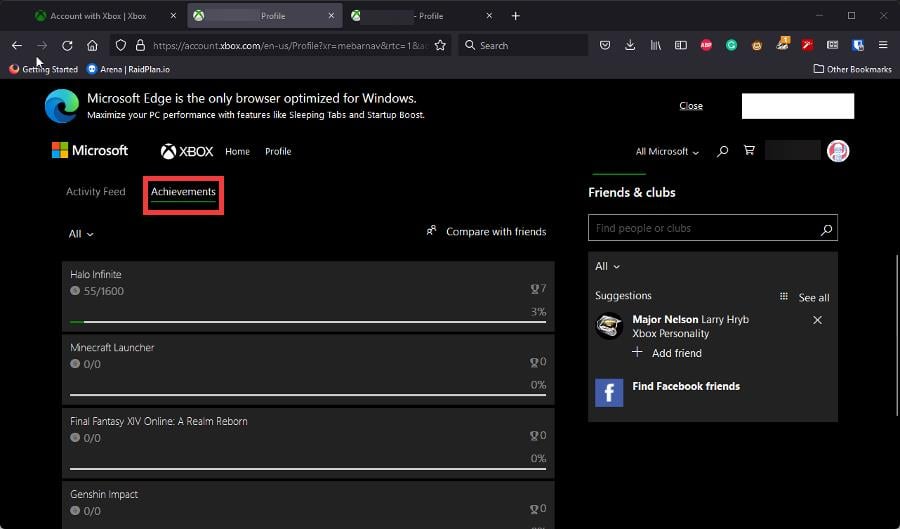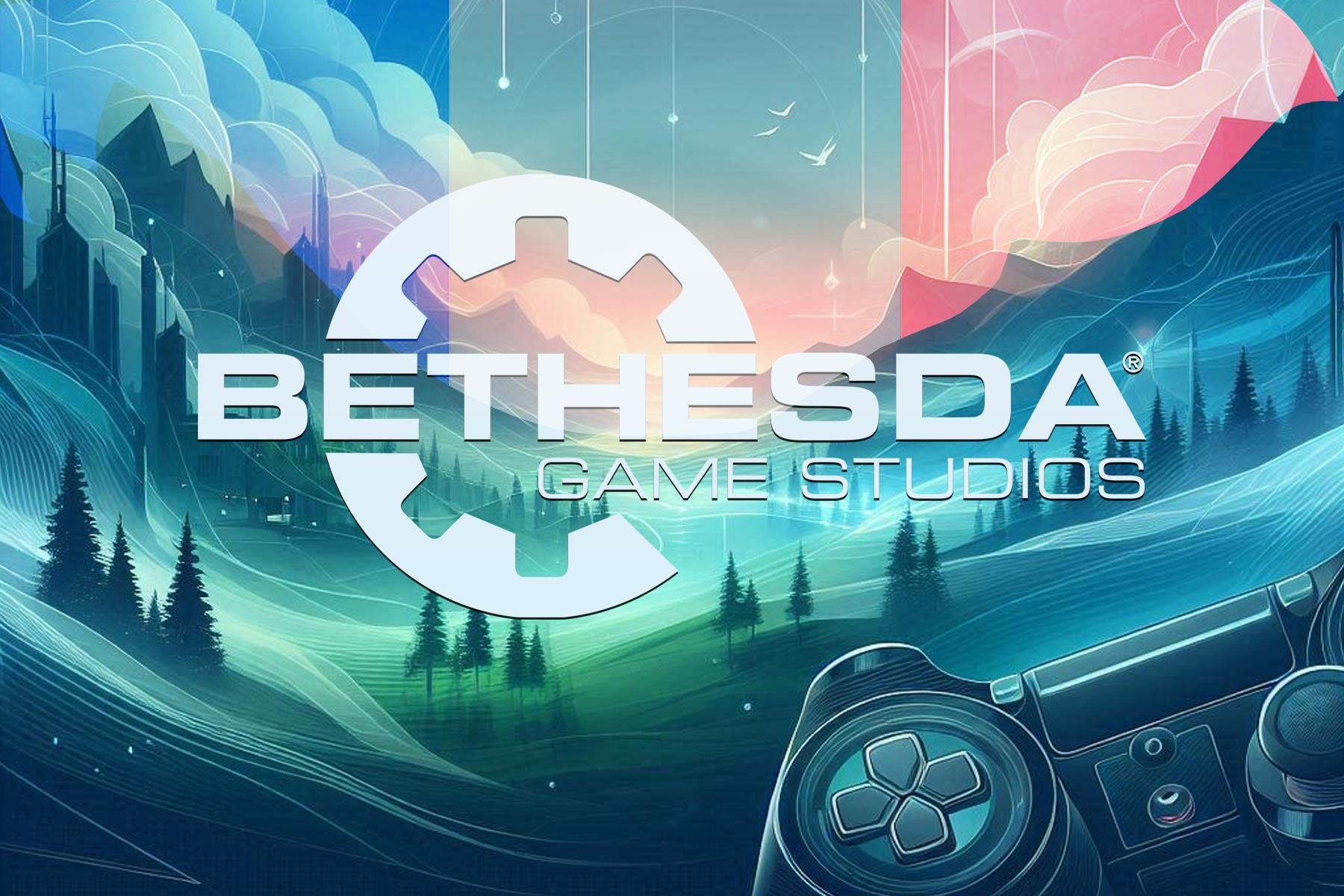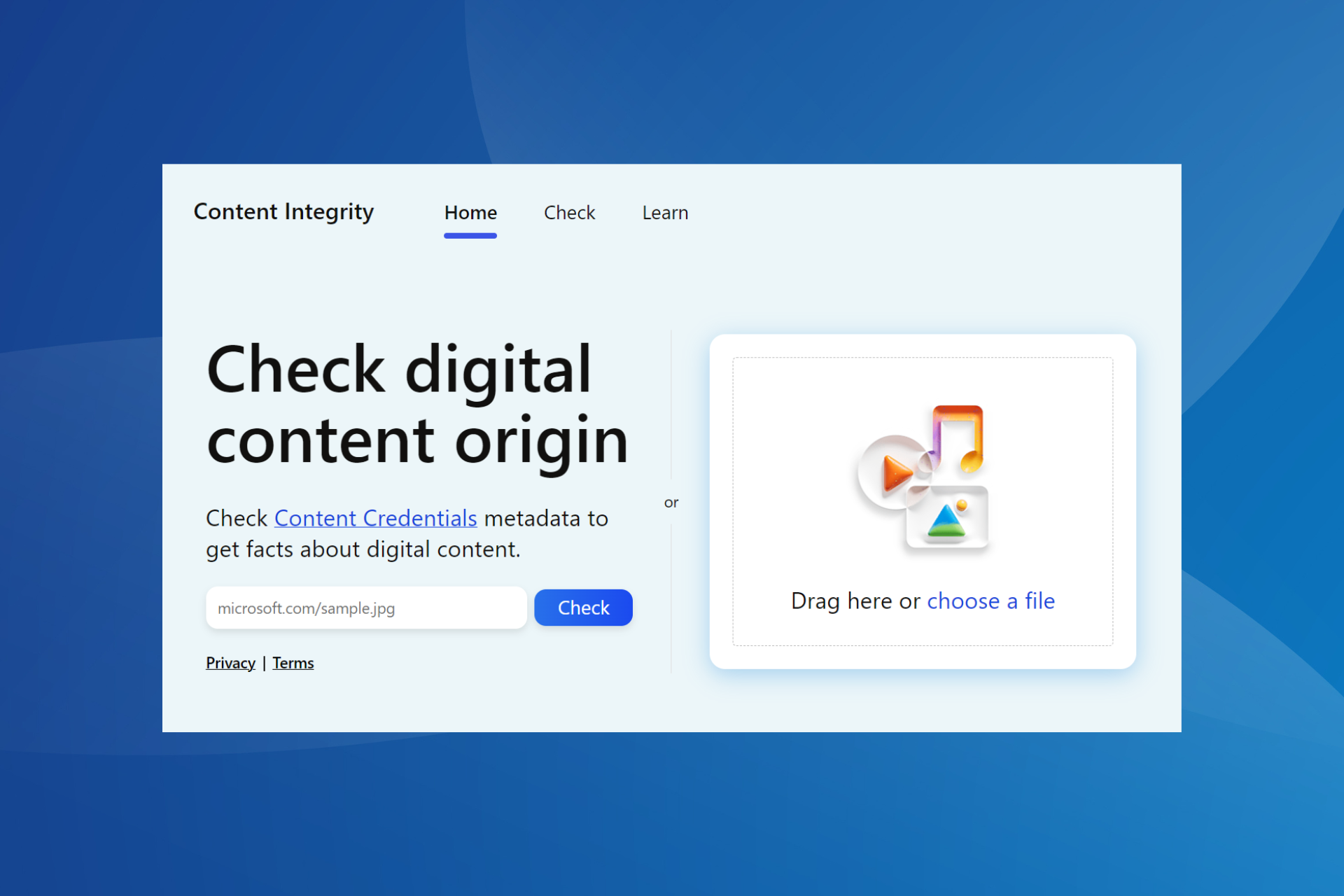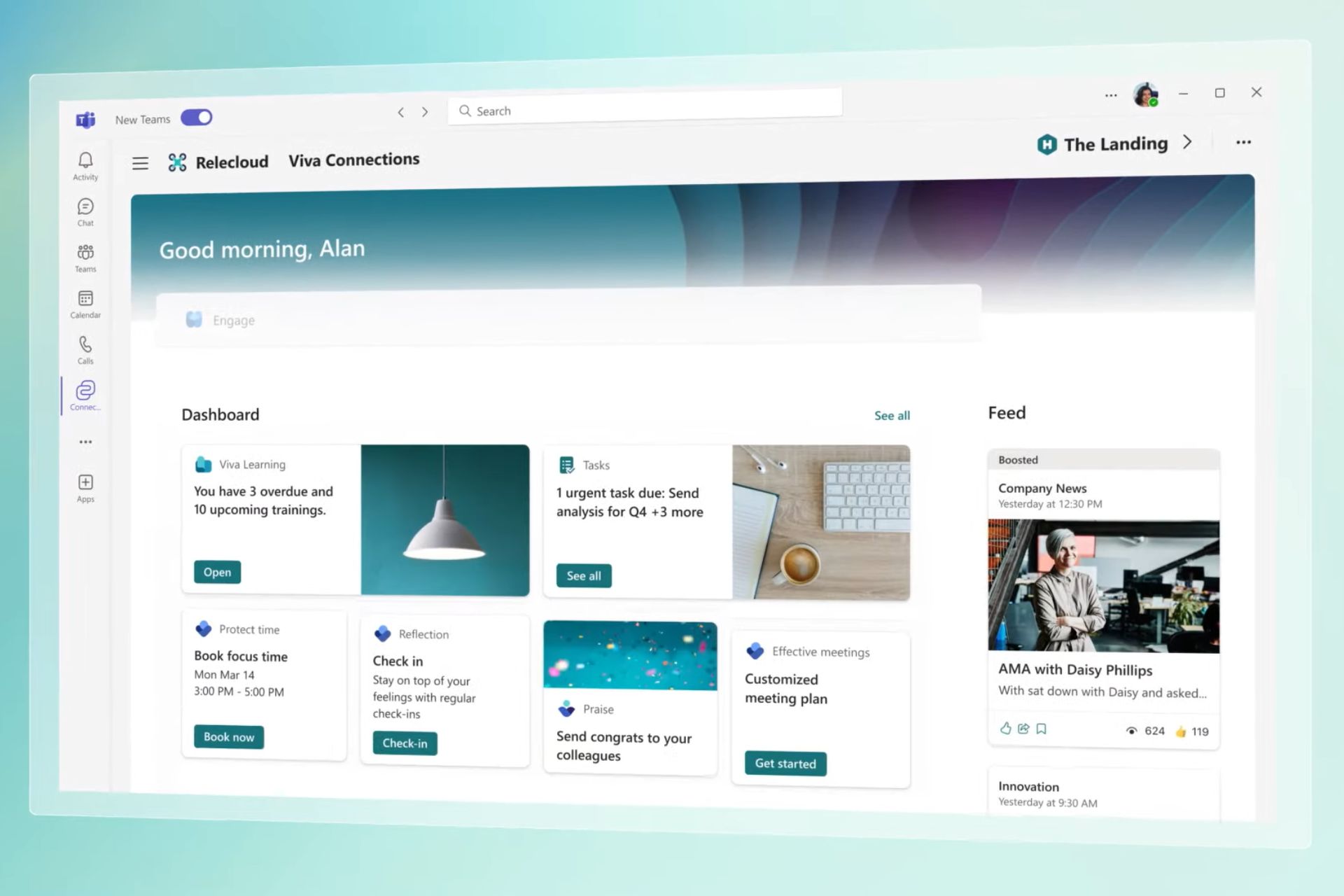20 Most Played Triple-A Titles on Xbox [Monthly Roundup]
This guide breaks down the most popular games for the Xbox brand
19 min. read
Updated on
Read our disclosure page to find out how can you help Windows Report sustain the editorial team Read more
Key notes
- Xbox consoles have been a top-rated and influential series of systems.
- The brand has sported some of the greatest games, but what are the most popular ones?

Since its launch in 2001, the Xbox brand has seen continuous success and shows no sign of slowing down. It’s unique because it is the only American console in a world dominated by Sony and Nintendo.
Many American companies tried their luck in the video game industry, only for all of them to bite the dust and fade into obscurity. Finally, however, Microsoft hit the ground running as it had one of the best possible games.
The very first Xbox console had Halo: Combat Evolved as one of its first games, and it was, without a doubt, the star of the show. It was a revolutionary game whose effects are still felt to this day.
Halo was a massive success and has gone off to lead all of the Xbox consoles that came after as the main star, which the brand is most known for. And from we got exclusives like the Gears of War franchise and Forza.
And then we saw the release of the beloved Xbox 360 and the start of games like the Mass Effect series, Grand Theft Auto 5, the first iterations of the modern Call of Duty games, and so on.
We even saw Microsoft experiment with its consoles, such as the Kinect peripheral, during the time of the Xbox 360. After that, the brand expanded to PC with Xbox Game Pass.
The Xbox Game Pass is a gaming subscription service that provides a rotating catalog of games from various publishers and services. All you have to pay is a monthly subscription, and you get many games at your disposal.
What is Xbox’s most popular game?
Fortnite – Best team shoot ’em-up
According to Microsoft, the most popular game on the Xbox Series X is Fortnite. This isn’t all that surprising if you think about it. Fortnite has enjoyed consistent success ever since it came out in 2017.
The gameplay is fast and engaging, the graphics colorful and inviting, and tons of pop culture characters. For example, what other game has Darth Vader shot Spider-man, who is also shooting a guy in a fish mask?
No other game that is so jammed-packed with fantastic characters and gameplay modes that hold a massive amount of character comes to mind. And the best part is it’s free.
You don’t have to pay a single dollar to enjoy the game, but if you do, you’ll be able to enjoy it even more.
Call of Duty: Modern Warfare – Most realistic battle engine
Next up on the list is Call of Duty: Modern Warfare, although it would probably be more accurate to call it Call of Duty: Warzone. Modern Warfare is part of a more extensive game package that includes two other games.
Even though there are multiple games, Modern Warfare is the most popular; the question is why? The multiplayer in this game is more organized than in the other entries. Cold War is much more fast-paced, and Warzone is a battle royale.
Modern Warfare is more systematic. The game is slower-paced because it focuses more on tactical gameplay than running and shooting. Players often camp while laying traps or hiding behind doors.
Gunfights are rare and much more impactful. The other games have you absorb bullets like a sponge. As a result, modern Warfare is more nerve-wracking than the others, which has translated to addictive gameplay.
➡ Get Call of Duty: Modern Warfare
Apex Legends – A great free-to-play shooter
Third place is Apex Legends, yet another free-to-play shooter like Fortnite. And just like the number one spot, it has similar fast-paced gameplay and bright, colorful graphics. So what’s the difference?
The gameplay in Apex Legends is more technical and has a higher skill ceiling. Fortnite is a casual game; anybody can pick it up, and it is pretty easy to master. It doesn’t have a high-skill ceiling.
Think of Apex Legends as a cross between Fortnite and Call of Duty. It’s a first-person shooter with various weapons, from pistols to sniper rifles and even a bow and arrow.
You can attach unique weapon mods that change the accuracy, ammo capacity, and power of a gun. Weapon skills also matter heavily; they can turn the tide in your favor.
Plus, Apex Legends has a set cast of heroes that you can choose from, who all have unique abilities to give the game its flavor.
ROBLOX – Extremely large open-world adventure game
The first non-shooter on this list is ROBLOX. Well, to be more accurate, it’s the first entry not to have FPS gameplay as its primary focus. Instead, ROBLOX is like Minecraft because it’s an enormous open-world game with many different modes.
You can race cars, break out of jail in a massive cops and robbers mode, create a theme park, adopt a pet, or hang out with friends. There are also shooting modes like a zombie apocalypse or battle royale modes. What sells ROBLOX is the amount of creativity it allows.
The modes don’t come from the developers themselves but rather from the fans. Players can take the time to create these modes and then upload them to ROBLOX.
The developers have some instructions that fans can follow if they want to try and make FPS modes for the game. ROBLOX is genuinely the ultimate sandbox game.
Grand Theft Auto V – Best open-world gangster game
Grand Theft Auto V is the juggernaut that doesn’t go away. It first came out on the Xbox 360, and people still play it. But, unfortunately, it’s gotten to the point gamers joke around and say that the developer Rockstar can’t count to six.
People also make fun of the number of platforms the title is on. However, the game has been out for almost a decade and still sees a consistent player base. It’s gotten to the point where it’s one of the most successful entertainment products of all time.
GTA 5 has made more money internationally than some movie franchises and TV shows. The funny thing is that the main story is often ignored, which is a shame because it’s excellent.
The main draw is multiplayer, centered around being a criminal and pulling off massive heists. You can buy fast cars, own huge houses, and do whatever you want.
Destiny 2 – Best eye-catching sci-fi shooter
Now we have the first of two sci-fi shooters, Destiny 2. Like many entries on this list, it’s a free-to-play game developed by the old Halo developer, Bungie.
It’s a bit strange game because it takes so many different elements from various games. First and foremost, it’s an MMORPG, meaning you can play with many other people with a set goal.
People come together to face off against raid bosses for valuable loots and weapons or fight each other in a player versus player mode. In addition, exploration was expanded upon in Destiny 2 compared to the first game.
The first game was pretty restrictive in what players could do. However, new content is consistently being rolled out that continues the story and adds more weapons.
Critics love it, players love it and show no signs of slowing down.
NBA 2K22 – Best basketball simulator
We’ve finally reached a game that has nothing to do with shooting gameplay. As you can tell, FPS games are top-rated on the Xbox Series X/S and Game Pass.
NBA 2K22 is the premier basketball game from 2K Games. You can play out your fantasy NBA career with the MyCareer mode and rise through the ranks of the NBA. If you’d rather be a manager, you can play MyGM or My League to be an executive.
The game claims it has the most competitive and immersive version of basketball in a 2K game. You can add skills that improve your dribbling, shooting, dunking, and blocking.
Later this year, a probable 2K23 will come out as this is a yearly franchise. Few changes happen between titles other than an up-to-date roster for the NBA.
Rainbox Six: Siege – Great tactical shooter
Going back to the FPS game, we have Rainbow Six: Siege. This title takes what Modern Warfare does and takes it even further. It’s a tactical shooter, so it has an emphasis on strategy.
This isn’t a game where you go into a room with guns blazing. Instead, it heavily emphasizes cooperation between team members; you can only win if you work together.
Different modes in the game may have you try to defuse a bomb, rescue a hostage, or take control of an objective point. One team will be the attacker, and the other will be the defender.
Another big emphasis in the game is environmental destruction. You can shoot through walls or blast through them. Developers encourage players to blow up walls to get to their objectives.
It offers a new gameplay mechanic open to creativity.
Elden Ring – Amazing open-world game with great quests
Elden Ring was a highly anticipated game that managed to deliver on the hype. But, unfortunately, that isn’t some most games can boast. The majority of developers make a lot of promises that they can’t keep and end up disappointing the players.
BANDAI NAMCO hit it out of the park with this one. So Elden Ring is an open-world RPG similar to the Dark Souls series. It’s a challenging game where a nameless knight goes out to harness the power of the Elden Ring.
Players must fight monsters, explore dungeons, and jump over considerable chasms in their quest. In addition, there are tons of different classes that you can build with unique gameplay mechanics.
The story is even written by George R.R. Martin, the same author behind the Game of Thrones series.
Minecraft – Amazing open-world creator
Now we have the family-friendly Minecraft. Microsoft bought the game some years back for an absurd amount of money and has seen continuous success.
It’s a bit like ROBLOX in that it’s an open-world game that theoretically allows you to do whatever you want. Minecraft does this, but it’s much more focused on its gameplay.
The game’s main objective is to explore a vast world, build anything that comes to mind, and compete with other players on multiplayer servers. No unique shooting modes or race tracks exist, but you can create a castle.
Plus, it has cross-play support, so you can play with friends on a PC while playing on the Xbox Series X. Finally, it has an extensive modding community that further enhances the game.
Halo Infinite – Powerful multiplayer and singleplayer shooter
Now we have the premiere Xbox title and are the only one on this list that’s exclusive to the brand: Halo Infinite. But, of course, the Halo series is synonymous with the Xbox brand, so much so that it would have been strange not to include the game here.
The sixth mainline entry continues the story of the Reclaimer Saga Master Chief facing off against an alien threat known as the Banished on the ringworld called Zeta Halo.
What’s unique about Halo Infinite is that it’s the first entry to have its multiplayer mode separate from the main game, and have it be free-to-play. Unfortunately, the multiplayer came out before the main story annoyed some people.
They would’ve liked the complete package from the get-go, but still, players enjoyed the multiplayer. In addition, people praised the title’s gameplay, soundtrack, and graphics.
It has fallen off recently, but that’s probably low developer support. They’re probably cooking up something in the back.
Hades – Engaging dungeon explorer game
Hades is the only indie game on this list and is highly beloved on Metacritic. It’s a rogue-like game, meaning you explore a procedurally generated dungeon.
Procedurally generated means that the game randomizes its rooms. The story has you trying to escape the realm of Hades, and it takes you multiple times to escape the underworld.
And every single time you escape, the rooms and enemies you encounter are different. In addition, the power-ups that drop change every single playthrough, so you never know what you’ll get.
One run, you may have thunder and fire, and then in the next, you have thunder and water. It’s a great way to keep the game fresh yet familiar.
Forza Horizon 5 – Best racing game
Now we have the only racing game on this list with Forza Horizon 5. In the Halo series, Forza has been on Xbox consoles since the original console. There are two mainline titles: the Motorsport line and the Horizon line.
Forza Motorsport is a traditional racing game, while Horizon is an open-world title. The game takes place in Mexico and has stunning visuals that account for the country’s unique landscape.
It brings in new modes such as Events Lab, which lets players create customized races with unique rules and objectives. And there’s also Forza Link, a little AI assistant that tracks your progress and helps you find players.
Rocket League – Amazing teamwork and reflexes game
Rocket League is the final game on the most popular titles for the Xbox Series X/S and Game Pass. Don’t let the cars fool you, thinking this is a racing game. It’s quite the opposite.
Rocket League is a weird form of arcade-style soccer where you crash into a giant soccer ball and try to score into a vast net. But as you can see, you see turbo-boosted cars instead of players.
It’s a silly game with bright colors everywhere and an excellent cartoon style. You can boost jump into the soccer ball or other players to stop them from getting a goal.
Like some of the older games on this list, it has enjoyed continuous success. It’s going through season six, bringing in new items and arenas.
What were the most played games on other Xbox consoles?
According to sales figures, this section will break down the most played games on other Xbox consoles. Because, at this point, that’s all that’s available.
But because this guide has already talked about that game, it will be skipped here. So instead, the second and third places will be the focus.
1. PUBG: Battlegrounds – Battle your online friends with hundreds of weapons
Starting off the list the best-selling Xbox One game is PUBG: Battlegrounds. Short for PlayerUnknown’s Battlegrounds, PUBG was a battle royale game before the genre got popular.
One person initially created it, Brendan “PlayerUnknown” Greene, based on previous that he had created. A group of 100 players got thrown onto an island where people had to look for weapons to kill others to survive.
From that description, this was the inspiration for Fortnite. It even had a shrinking map size that forced players together. The game is still widely played worldwide and has a pretty big community in Asia.
This has led to PUBG hosting pretty random collaborations with various anime franchises. It’s weird, but it works.
2. Call of Duty: Black Ops III – Fight for survival in this immersive world
The other best-selling Xbox One game is (unsurprisingly) Call of Duty: Black Ops III. It’s a lot like any additional Call of Duty game. It’s an action-packed FPS shooter where you go around killing other players.
What was unique about this particular title was how silly it was. It took itself seriously on the surface, but if you look deep down, Black Ops III had some goofy modes.
For starters, the multiplayer had players equip cybernetic enhancement that allowed them to jump off the walls and fly briefly through the air on a jetpack.
And there’s the infamous Zombies mode where you had to fight off a horde of the undead in a suit. Of course, all of that still exists in modern entries, but Black Ops III took it to another level.
➡ Get Call of Duty: Black Ops III
3. Kinect Adventures – Get a workout while having fun
You have to wonder how many people reading this guide remember the Kinect on the Xbox 360. But, to give a brief history lesson, it was a massive success when the Nintendo Wii was launched.
From that, Sony and Microsoft tried to incorporate their version of motion control games on the PS3 and 360. However, However, However, However, However, However, However, However, However, However, However, However, Mircosoft was arguably more successful with its Kinect.
The Kinect was packaged in many Xbox 360 consoles, leading to its main game, Kinect Adventures, being incredibly successful. According to Microsoft, the Kinect sold 24 million copies.
The game itself has players surf through rapids, play a weird version of handball, and fly through space. Unfortunately, despite high sales, the Kinect died off quickly.
4. Call of Duty: Modern Warfare 3 – Finish immersive mission on a variety of realistic maps
This is the final Call of Duty entry on this list, and we’re ending it with Modern Warfare 3. It’s been repeated repeatedly, but it cannot be ignored; just influential Call of Duty was when it got a facelift.
It was no longer a slow-paced World War II shooter but now an action-packed game where many people could jump and shoot each other. Modern Warfare 3 didn’t change much from the previous installment but it improved things.
The Special Ops mode from 2 made a comeback with new features. It brought in Survival mode, where two players are thrown into an arena and must survive multiple waves of enemies.
It also brought back Zombie mode, a big hit in the previous game. Also, returning from Modern Warfare 2 were Team Defender and private matches. But, again, this game didn’t reinvent the wall; it just made it better.
➡ Get Call of Duty: Modern Warfare 3
5. Halo 2 – Immerse yourself in a virtual world like no other
Halo 2 was an enormous success for the original Xbox and was a console seller. You just had to buy an Xbox to get your hands on this game. People regard it as one of the best games of all time.
It was the most popular game on Xbox Live for a while and sold over 8 million copies in its lifetime. Halo 2 took what the original did and improved upon it significantly.
The story was grander; certain weapons could be dual-wielded, melee attacks were made more powerful, and you could steal vehicles. But, of course, these simple changes were mid-blowing back in those days.
The Covenant weapons got more of an identity as being able to pierce shields but tended to overheat. The multiplayer used matchmaking, which allowed you to choose the map and game type you like.
Then it searches out other players who want the same thing. What a fantastic g
6. Grand Theft Auto Double Pack – Explore Vice City and have fun with the NPCs
The duo of Grand Theft Auto III and its prequel Grand Theft Auto: Vice City is closing out this list. They were packaged on the Xbox at the Rockstar Games Double Pack, which combined the two titles.
According to VGChartz, the double pack had a total of 2.49 million sales throughout its lifetime. These were massively popular video games for their time. GTA 3, in particular, revolutionized open-world games and brought the industry into a new era.
No longer were video games seen as a child’s plaything. Now games were telling more mature stories and showing violence on screen. This caused much controversy for the games but served as great marketing.
Word of mouth spread the infamy of these games and saw the start of popularity that continues today. Good luck with finding the old versions, however. Rockstar seems to prefer gamers to play the terrible remakes.
And good luck with finding a copy of the double pack. Unfortunately, it’s been out of print for a long time.
➡ Get the Grand Theft Auto Double Pack
Most played games on Xbox by region
Getting exact numbers on the most played Xbox Series X games is challenging. Developers and publishers are very tight-lipped about these sales numbers or how many people actively play.
They often mesh numbers from different platforms into one. The closest thing found was a Statista post on the most popular games on the Xbox Series X/S in the US as of November 2020.
These numbers are based on how many players had these games installed on their consoles. Also important to note is that these numbers have been rounded off.
Although sales numbers for the Xbox Series X/S in other regions are unknown, what is known are the other consoles. The website VGChartz has been gracious enough to keep detailed information about popular games.
➡ Xbox One
The most popular Xbox One game by total shipping numbers is Halo 5, with five million units shipped. These are the following entries for their respective region.
➡ Xbox 360
The most popular games in terms of total shipped are Kinect Adventures and Halo 3. Apart from those two, these are the five runner-ups.
➡ Original Xbox
Going by total units shipped, the most popular games on the original Xbox were Halo 2 (eight million), Project Gotham Racing (six million), and Halo: Combat Evolved (five million). These are the runners-up.
How can I view my most played games on Game Pass?
- Sign in to your Xbox account on your PC.
- Click on your profile picture on the next page and select Xbox Profile.
- Under your profile, select Achievement and then choose a game.
- Now, click on Achievements again and see how long you’ve played the game; therefore, you can find out which is your most played game.
If you are interested in knowing interesting facts, user-based and revenue statistics of Xbox, check out this guide.
Feel free to leave a comment below if you have any questions about these titles. Also, feel free to comment on guides you’d like to see.



